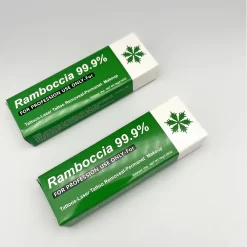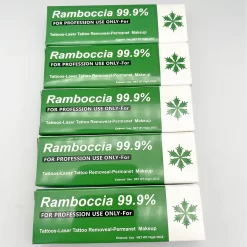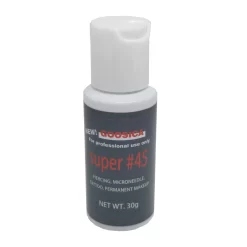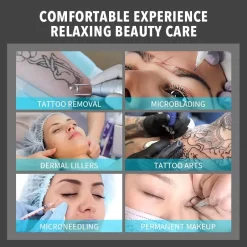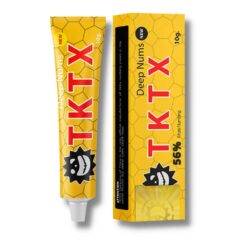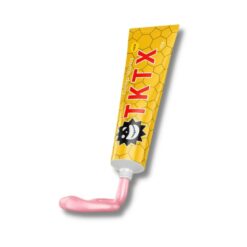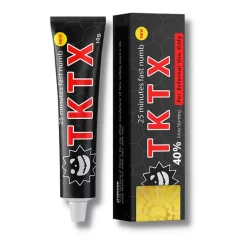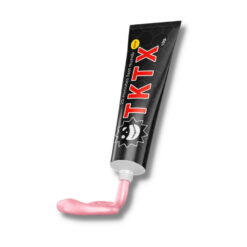The use of lidocaine is quite common in cosmetology. It is one of the most popular anesthetics and is used in the form of topical preparations (e.g., creams, sprays) or injectable solutions.
How is lidocaine used in cosmetology for pain relief?
Local anesthesia with lidocaine can be performed in several ways. If we are talking about a solution, then it can be administered by infiltration. This type of anesthesia should be carried out by a specialist; you should not try to inject yourself.
You can also use lidocaine cream or spray to numb injection procedures. The treated area is covered with cling film, which will facilitate the penetration of the anesthetic into the skin. In any case, you must follow the instructions for the use of the drug.
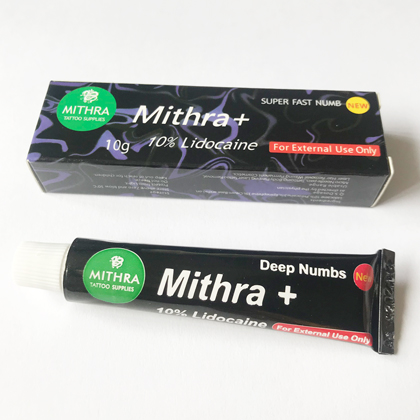
How does lidocaine help reduce pain and discomfort during injection procedures?
The analgesic effect of anesthetic cream with lidocaine occurs when it comes into direct contact with tissue. The drug reversibly blocks the transmission of nerve impulses. Pain sensitivity may not disappear completely, but become dull.
What beauty treatments use lidocaine?
Pain relief with lidocaine can be performed before the following popular cosmetic procedures:
- Epilation. Waxing, sugaring, and electrolysis are procedures in which many girls are accustomed to enduring pain. But thanks to modern anesthetics, this is no longer necessary. Moreover, hair removal sessions can be quite long.
- Chemical peeling. During medium peeling, the patient may experience unpleasant and even painful sensations. Therefore, before exfoliation, it is recommended to numb the skin, for example, with lidocaine cream.
- Injection procedures. Biorevitalization, mesotherapy, and plasma therapy are considered effective methods of skin rejuvenation, but they all involve the administration of drugs with a needle, which is quite painful.
- Laser therapy. Laser technologies today are actively used in cosmetology for hair removal, removal of tumors, and skin rejuvenation. However laser exposure can be painful, so it is also recommended to numb the skin before the session.
- Mechanical facial cleansing. The essence of the technique is a deep cleansing of the skin. This may involve using an abrasive that irritates the skin. A mechanical cleaning session can hardly be called pleasant. Application anesthesia helps reduce discomfort.
- Installation of mesothreads. This procedure is especially painful if the threads are installed in the area between the eyebrows, nasolabial folds, and on the forehead. Some specialists prefer injection anesthesia, but application anesthesia is better since it does not change the clinical picture.
There are other procedures in which it is advisable to perform anesthesia. It is important to remember that the patient can always ask for anesthesia if the manipulations involve pain. If you are denied pain relief, this may be a reason to look for another specialist.
Can side effects or complications occur when using lidocaine in cosmetology?
An allergic reaction to amide anesthetics, which includes lidocaine, occurs quite rarely. They are most often caused by preservatives added to some drugs or methylparaben used for stabilization in multi-dose vials.
What percentage of lidocaine is most effective for cosmetic procedures?
Goosica Numbing cream is an anesthetic cream with lidocaine (12.5%) and prilocaine (12.5%). A two-component composition provides better pain relief than a one-component one. Therefore, this formula is considered one of the best for skin pain relief.
The formula of the cream has been studied quite well, which allows it to be used even in newborns. The composition does not contain preservatives, for example, sodium methyl parahydroxybenzoate, sodium propyl parahydroxybenzoate, or phenoxyethanol, which can provoke an allergic reaction.
Goosica Numbing must be applied to clean skin in a thick layer. Then the treated area of the skin must be covered with cling film. A local anesthetic is applied 60 minutes before the painful procedure. The analgesic effect lasts for approximately 2 hours.


